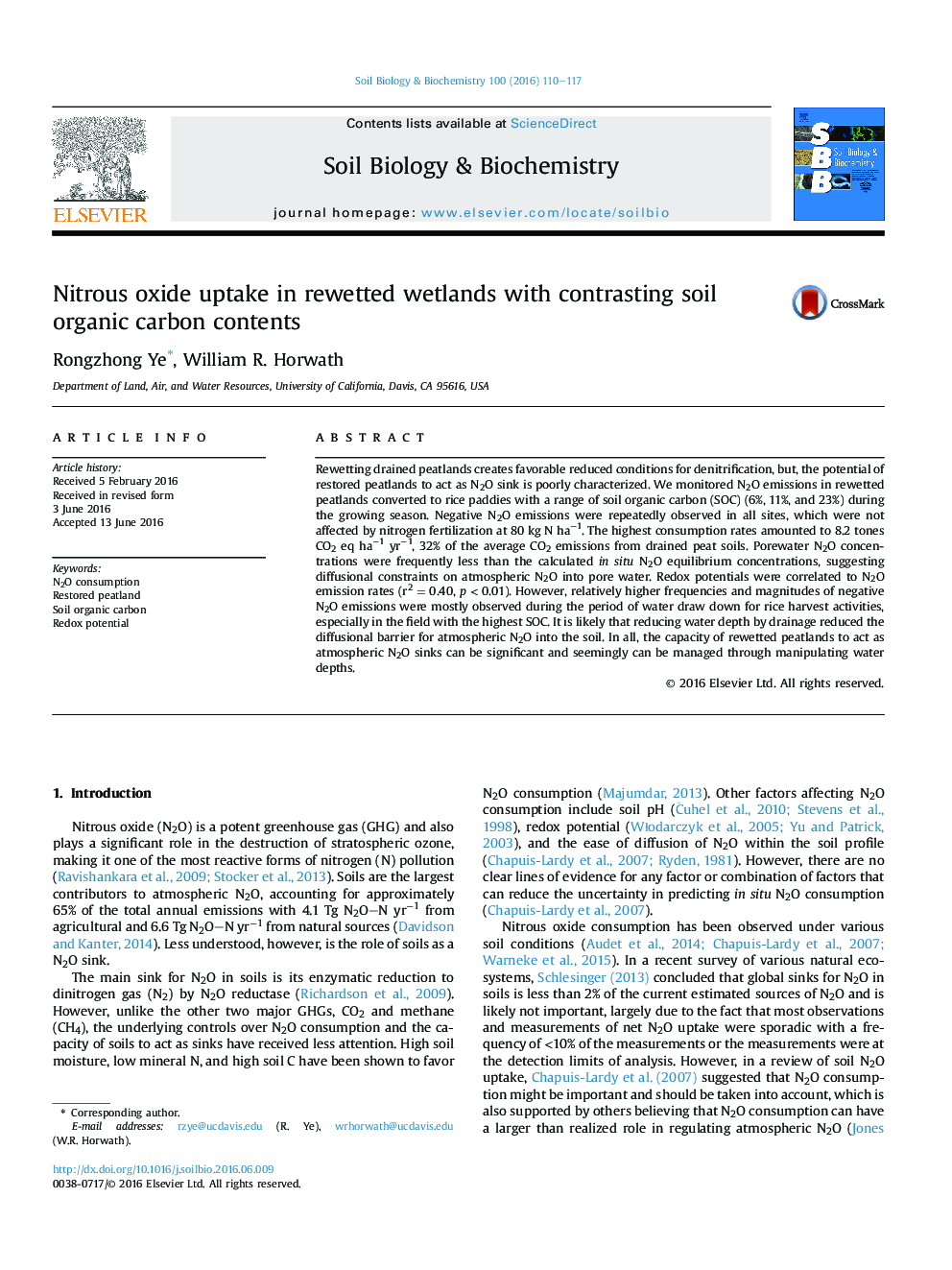| Article ID | Journal | Published Year | Pages | File Type |
|---|---|---|---|---|
| 8363482 | Soil Biology and Biochemistry | 2016 | 8 Pages |
Abstract
Rewetting drained peatlands creates favorable reduced conditions for denitrification, but, the potential of restored peatlands to act as N2O sink is poorly characterized. We monitored N2O emissions in rewetted peatlands converted to rice paddies with a range of soil organic carbon (SOC) (6%, 11%, and 23%) during the growing season. Negative N2O emissions were repeatedly observed in all sites, which were not affected by nitrogen fertilization at 80 kg N haâ1. The highest consumption rates amounted to 8.2 tones CO2 eq haâ1 yrâ1, 32% of the average CO2 emissions from drained peat soils. Porewater N2O concentrations were frequently less than the calculated in situ N2O equilibrium concentrations, suggesting diffusional constraints on atmospheric N2O into pore water. Redox potentials were correlated to N2O emission rates (r2 = 0.40, p < 0.01). However, relatively higher frequencies and magnitudes of negative N2O emissions were mostly observed during the period of water draw down for rice harvest activities, especially in the field with the highest SOC. It is likely that reducing water depth by drainage reduced the diffusional barrier for atmospheric N2O into the soil. In all, the capacity of rewetted peatlands to act as atmospheric N2O sinks can be significant and seemingly can be managed through manipulating water depths.
Related Topics
Life Sciences
Agricultural and Biological Sciences
Soil Science
Authors
Rongzhong Ye, William R. Horwath,
